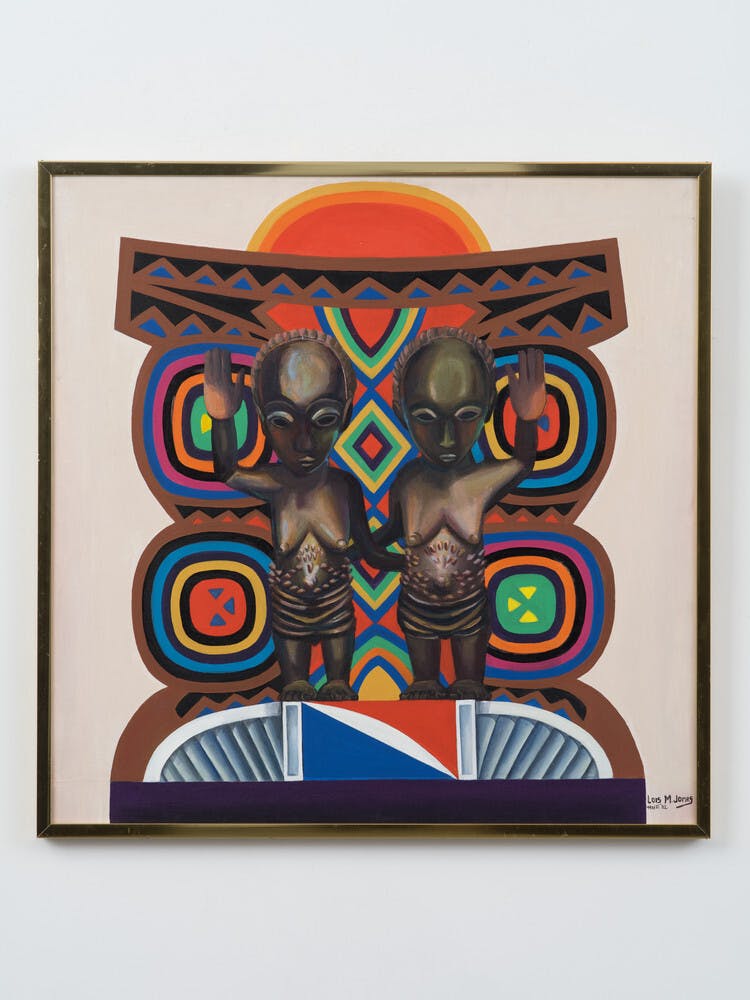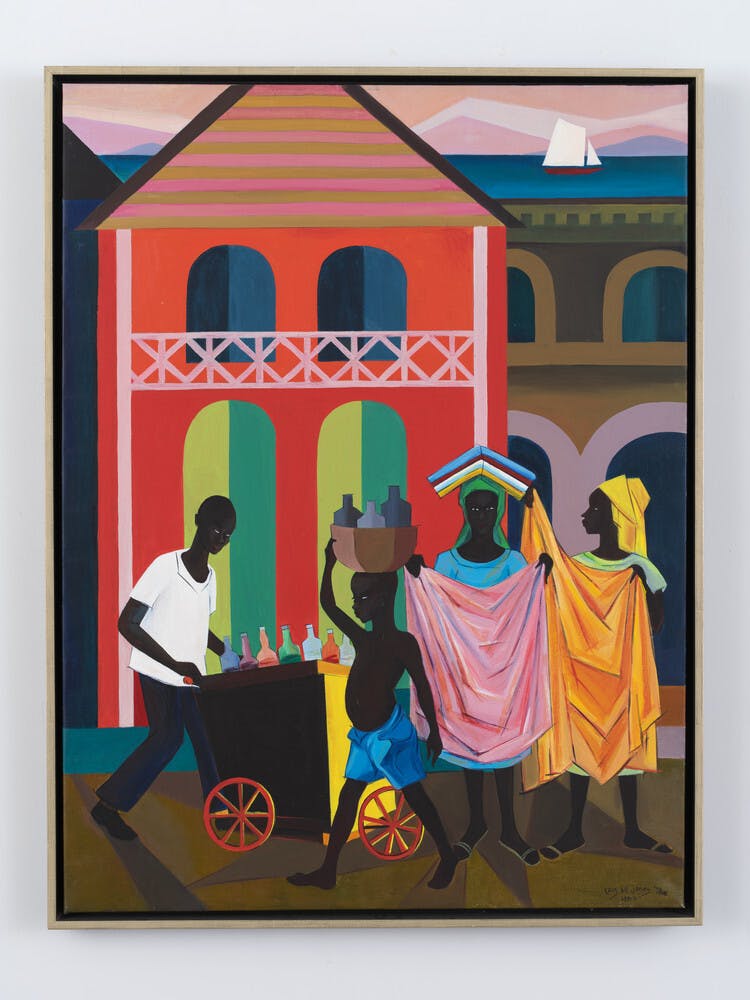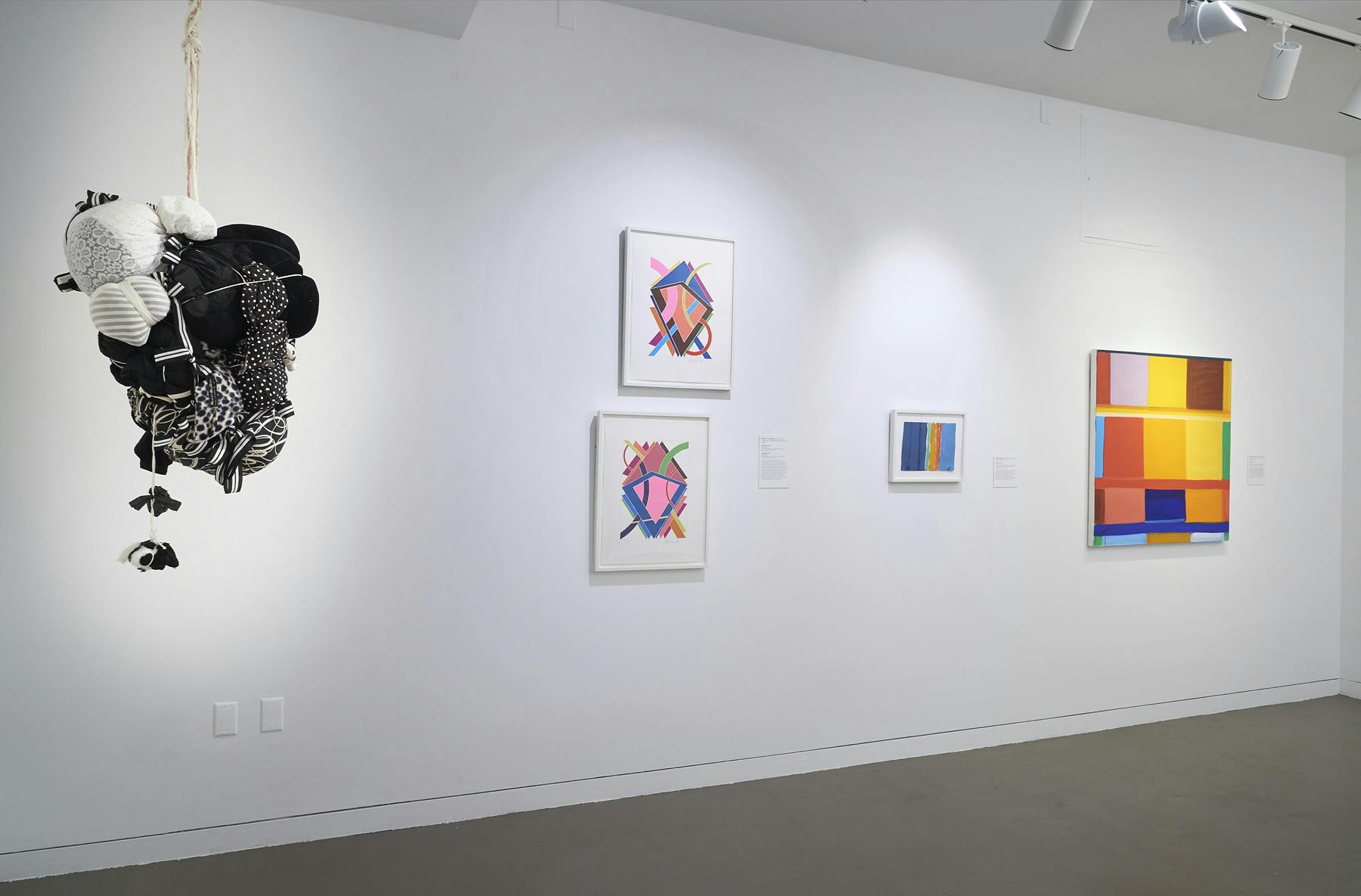Lois Mailou Jones
(1905–1998)Biography
Loïs Mailou Jones’s refusal to create work within the bounds of what was expected of Black artists during her lifetime exemplifies her dedication to highlighting—both in her practice and through the championing of other artists’ work—the social struggles faced by African Americans in the twentieth century.
Loïs Mailou Jones began her career in textile design before deciding to focus on fine arts. Raised in Boston, she studied at the School of the Museum of Fine Arts, Boston, and the Designers Art School of Boston. Jones gained recognition as an artist while living in Paris in the 1930s and 40s. While attending a summer session at Columbia University in 1934, she began studying the African masks that would become central to her best-known works. Influenced by the cultural production of Harlem Renaissance and her extensive travels in Africa and beyond, she made paintings, watercolors, and collages on a wide range of subject matter, from impressionistic landscapes to Cubist depictions of African sculptures to realistic portraits.
Equally as important as Jones’s artistic practice was her passion for education. From 1930 to 1977, Jones trained several generations of artists of African descent, including David Driskell and Elizabeth Catlett, while teaching in the art department at Howard University. In the 1960s and 70s, Jones frequently visited Haiti and interviewed contemporary artists as part of a project sponsored by Howard. Jones’s refusal to create work within the bounds of what was expected of Black artists during her lifetime exemplifies her dedication to highlighting—both in her practice and through the championing of other artists’ work—the social struggles faced by African Americans in the twentieth century.
Despite her expansive influence on the art historical canon and emerging artists, Jones found herself repeatedly excluded from history books due to her innovative approach to color, texture, design, and subject matter. Her work has appeared in numerous Studio Museum exhibitions, including Tradition and Conflict: Images of a Turbulent Decade 1963–1973 (1985); Explorations in the City of Light: African American Artists in Paris, 1945–1965 (1996); and Collected: Reflections on the Permanent Collection (2010).
Exhibitions and Events
Lois Mailou Jones
(1905–1998)Les Jumeaux Du Longo, 1982
Biography
Loïs Mailou Jones’s refusal to create work within the bounds of what was expected of Black artists during her lifetime exemplifies her dedication to highlighting—both in her practice and through the championing of other artists’ work—the social struggles faced by African Americans in the twentieth century.
Loïs Mailou Jones began her career in textile design before deciding to focus on fine arts. Raised in Boston, she studied at the School of the Museum of Fine Arts, Boston, and the Designers Art School of Boston. Jones gained recognition as an artist while living in Paris in the 1930s and 40s. While attending a summer session at Columbia University in 1934, she began studying the African masks that would become central to her best-known works. Influenced by the cultural production of Harlem Renaissance and her extensive travels in Africa and beyond, she made paintings, watercolors, and collages on a wide range of subject matter, from impressionistic landscapes to Cubist depictions of African sculptures to realistic portraits.
Equally as important as Jones’s artistic practice was her passion for education. From 1930 to 1977, Jones trained several generations of artists of African descent, including David Driskell and Elizabeth Catlett, while teaching in the art department at Howard University. In the 1960s and 70s, Jones frequently visited Haiti and interviewed contemporary artists as part of a project sponsored by Howard. Jones’s refusal to create work within the bounds of what was expected of Black artists during her lifetime exemplifies her dedication to highlighting—both in her practice and through the championing of other artists’ work—the social struggles faced by African Americans in the twentieth century.
Despite her expansive influence on the art historical canon and emerging artists, Jones found herself repeatedly excluded from history books due to her innovative approach to color, texture, design, and subject matter. Her work has appeared in numerous Studio Museum exhibitions, including Tradition and Conflict: Images of a Turbulent Decade 1963–1973 (1985); Explorations in the City of Light: African American Artists in Paris, 1945–1965 (1996); and Collected: Reflections on the Permanent Collection (2010).





